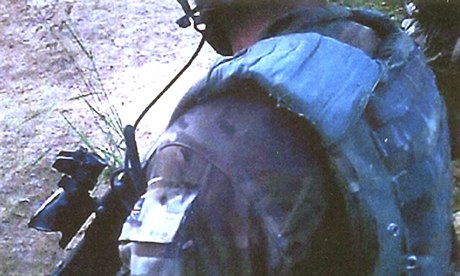The identity of Marine A has now been revealed as Sergeant
Alexander Blackman, this in itself has generated a lot of debate as to whether
or not this was the right thing to do. Secondly Sgt Blackman has now been
sentenced to Life with a minimum of ten years to be served. The debate about
the naming and sentence has been very interesting to read and to see the
support that Sgt Blackman actually has. As ever the debate spans the
conventional media as well as social media. The debate seems to focus on the
argument that as he was under a lot of pressure when he committed the act and
events of the tour had taken its toll on Sgt Blackman. Added to this is the
idea that unless you have experienced what Sgt Blackman had been through then
you cannot judge him.
The other side of the coin points out the fallacy of that
statement and the fact that in many ways it is not the man but the action that
is being judged. There is also the recognition that indeed the Sgt was under a
lot of pressure and had witnessed quite a bit on this tour of duty. However as the video shows the Sgt was fully
aware of the actions that he was taking and it was certainly not while under
fire.
One article highlights an interesting point about the camera
footage and the pressures and strains that over ten years of operational
deployments has put on the training in the armed forces. The article points out
the over familiarisation between the Sergeant and the Privates via the use of
the term “mate”. This may seem trivial at first but as the article points out
the enlisted men should be referring to Sgt Blackman as Sergeant or “Sarge” at
the very least. These terms may seem to be interchangeable and an unnecessary criticism
but as the article points out the difference is at the heart of military
discipline.
There is a growing call for his sentence to be halved or
reduced due to mitigating circumstances. Indeed yesterday it was revealed that
an appeal against Sgt Blackman’s conviction was to be launched.
For what it is worth I am on the fence when it comes to the
sentence, I believe that it was right for Sgt Blackman to face trial and for
justice to be seen to be fair. Perhaps the sentence is on the high side, but
the appeal will certainly draw this out. The important thing from all of this
is that it highlights how we (the British people) ask so much of our military
and yet seem to provide the least possible. It is no surprise that a lot of
care once former soldiers have left falls to charities such as Combat Stress,
Help for Heroes and the Royal British Legion. This is where Sgt Blackman has so
far been let down and here is where the argument relating to his mental
wellbeing needs to be taken into account and to hopefully wake our government up
to the fact that more care both before, during and after tours of duty needs to
be in place. The army is certainly not full of soldiers one tour away from
shooting POW’s, however there are a lot of serving and former serving soldiers
that could do would support and advice.







